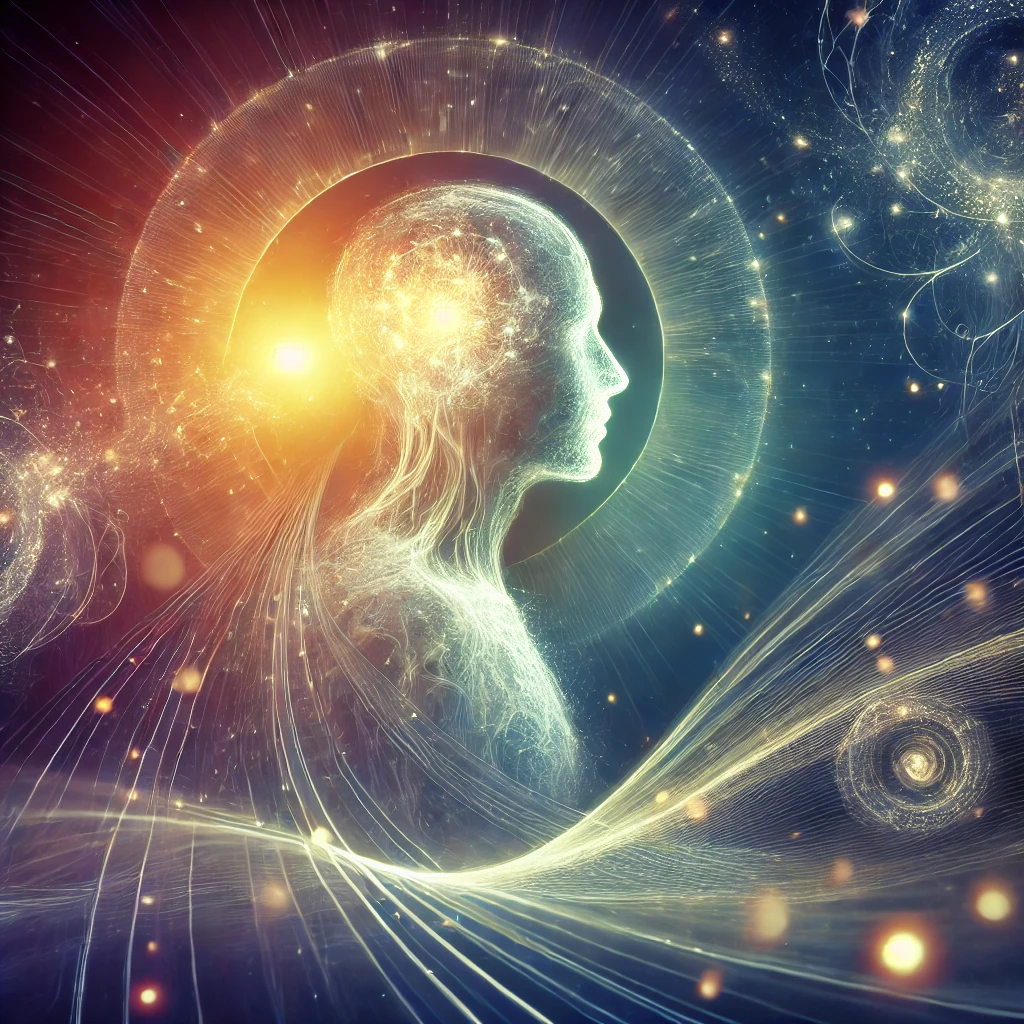Merging Selves, Containers, and the Eternal Dance of Alignment
At the crossroads of the unseen and the undeniable, a simple truth emerges: nothing simply is; everything is becoming.
The Question that Sparks the Becoming
There’s a quiet scene in Kundun that whispers a profound riddle. A boy, guided by monks, selects objects belonging to the late Dalai Lama, affirming his identity as the reincarnation. It’s a serene moment drenched in cosmic weight—a moment that asks: when does the essence, the energetic self (call it the EM self if you like), meet the fleshly container we call the body?
Is it a contract sealed before breath is drawn? Does it linger in the ether, waiting for the right moment? Or does it trickle in, drip by drip, as life sculpts the container into readiness?
These are not idle musings. In 2001, my own life shattered under the weight of such a question. What I now call awakening wasn’t a gentle dawn but a volcanic eruption—a raw, unceremonious claiming of my EM self. The container I’d carried for years was suddenly demanded to host something far larger. It was as if the soul stepped out of shadow, pointed at the body, and said, You’re mine now. And the body? It had to figure out what that meant.
Awakening: Breaking the Mold
Let’s not romanticize awakening. It’s not a gentle hand on your shoulder; it’s a sledgehammer to the ego.
Think of it like this: a domain name starts as an IP address. Functionally, it exists, but it has no form, no story, no identity. Over time, frameworks are built, content is added, a purpose is crafted. The raw becomes resonant. Similarly, humans are born as containers shaped by external forces—culture, biology, circumstance. These frameworks hold us together, but they’re placeholders, not the essence of who we are.
Awakening isn’t finding yourself; it’s claiming the tools to become yourself. It’s a violent birth, ripping down walls you never questioned. But it’s also liberation—the first real moment of co-creation between the container and the EM self.
Most people stick with the scaffolding they’re given, and that’s fine. But for those who awaken, life becomes an exercise in burning down the default to build the authentic.
The Container: A Flexible Paradox
Ah, the container—the body. We often treat it like a crude suitcase for the soul. But it’s more than a vessel; it’s the bridge that lets the EM self touch the world.
The body shapes the self as much as the self shapes the body. Consider the Dalai Lama—a container cultivated with intention, nurtured for alignment. Compare that to most of us, whose containers are forged in the chaos of a world that doesn’t care about alignment. And yet, there’s beauty in that chaos. No two containers are alike. Each reflects the infinite possibilities of becoming.
Some are extraordinary, built to house immense energy without shattering. Others are shaped by trauma, molded by disorder. Neither is wrong—they simply tell different stories about the interplay of self and container.
Thresholds: The Rubicon of Transformation
Every transition begins with rupture. The birth canal compresses; the umbilical cord is cut. These aren’t just biological events but metaphysical acts of individuation. Yet, what happens when thresholds are bypassed? A cesarean birth, for instance, avoids compression. Does that delay the EM self’s grounding in the body? Create new energetic vulnerabilities?
We don’t fully understand yet, and that’s okay. The point isn’t to rank experiences but to see them as part of the intricate choreography of becoming. Birth, trauma, awakening—they’re all thresholds. Each offers a unique blend of challenge and potential.
Timing: The Eternal Dance of Self and Container
In the Dalai Lama’s story, timing feels divinely choreographed. The container and the EM self align through a spiritual infrastructure centuries in the making. Most of us, however, don’t get that level of precision. We stumble through life, colliding with moments of clarity and rupture until self and container find a rhythm.
Alignment can happen gradually, through years of effort, or all at once in a singular cataclysm. Both paths are valid. Both are sacred.
The Universal Art of Becoming
Here’s the kicker: becoming doesn’t end. It’s not a point on a map but the map itself—a labyrinth of thresholds and transformations. From birth to death, from rupture to awakening, we are always dismantling and rebuilding. This process isn’t linear or predictable. It’s a constant unfolding, a cosmic experiment in which container and self endlessly negotiate their union.
The Dalai Lama’s path, my awakening, your moments of clarity—they’re all threads in the same infinite web. Each asks: how will you navigate the thresholds of becoming? What will you create when the EM self fully inhabits the container?
The answers don’t arrive as conclusions but as living questions. Threads waiting to be woven. And perhaps that’s the point: we are not here to be finished but to keep becoming, to lean into the mystery, and to see what emerges when we do.
Take a breath. Feel the container you call your body. Sense the EM self that animates it. Somewhere in that interplay lies your next threshold. And beyond it? More becoming. Always more.



